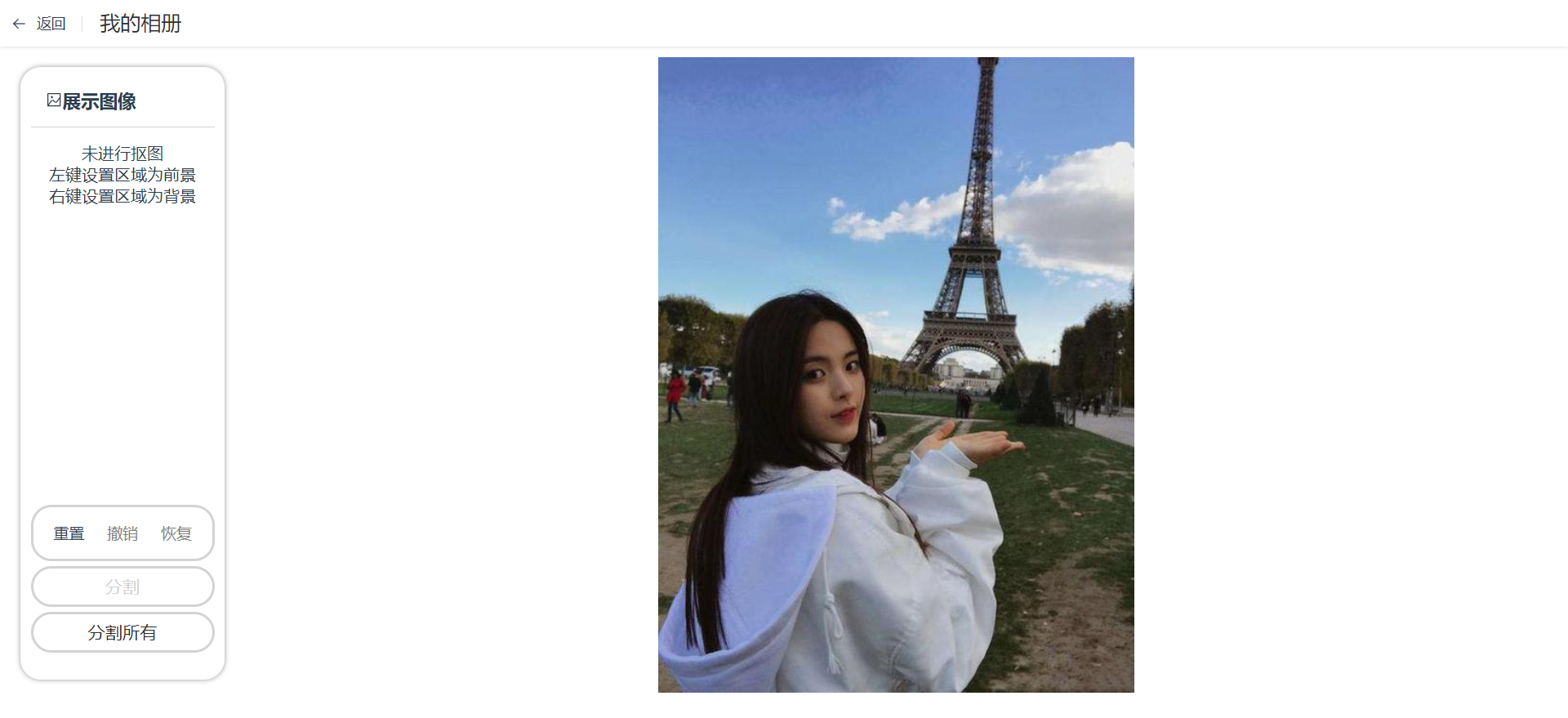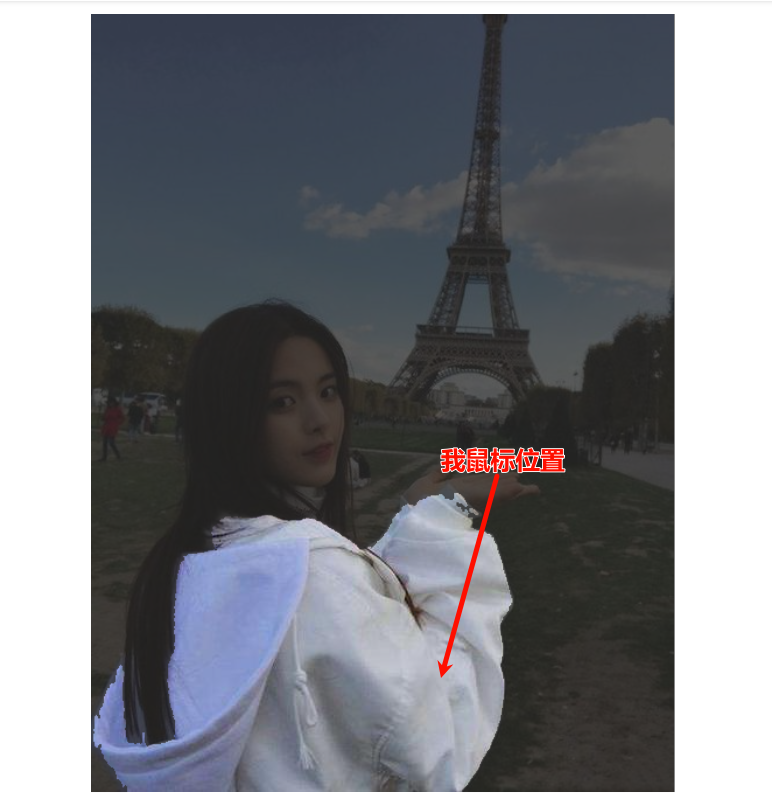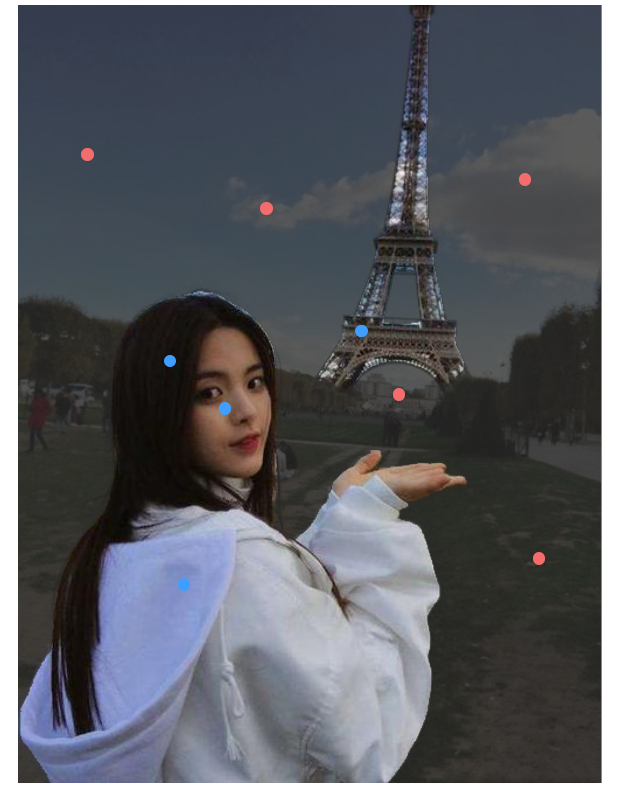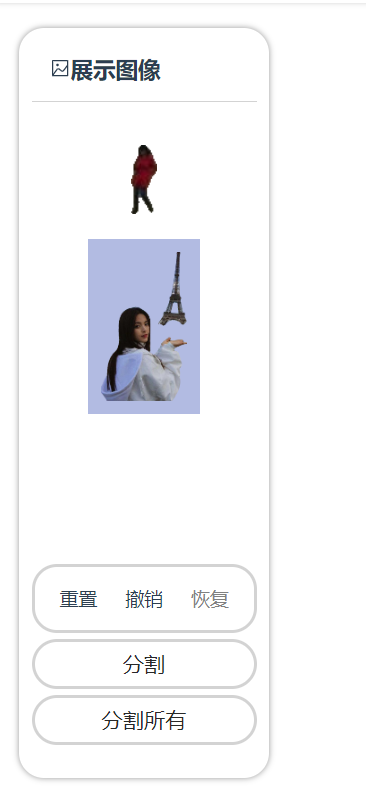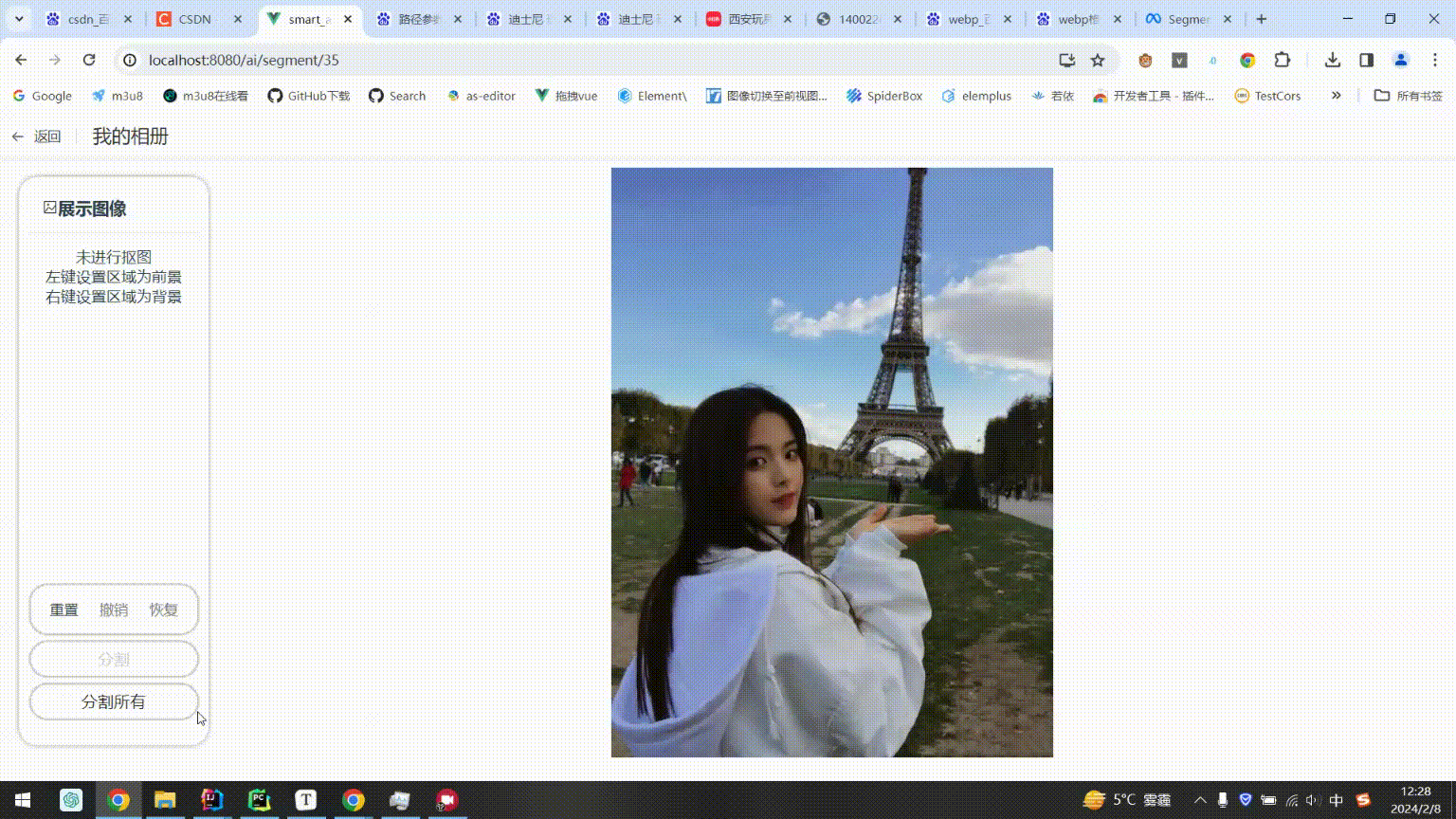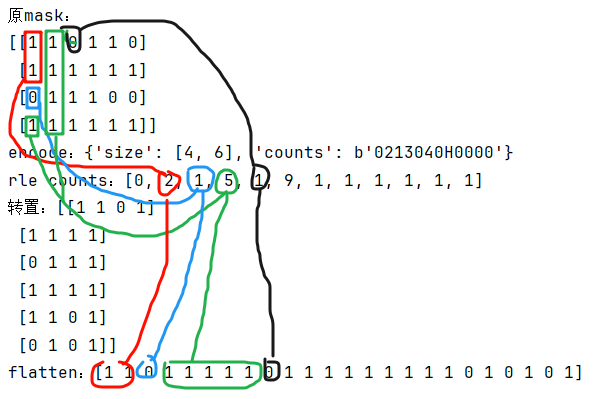没啥好说的,低质量复刻SAM官网 https://segment-anything.com/
需要提一点:所有生成embedding和mask的操作都是python后端做的,计算mask不是onnxruntime-web实现的,前端只负责了把rle编码的mask解码后画到canvas上,会有几十毫秒的网络传输延迟。我不会react和typescript,官网F12里的源代码太难懂了,生成的svg总是与期望的不一样
throttle了一下,修改代码里的throttle delay,反应更快些,我觉得没必要已经够了,设置的150ms
蓝色前景,红色背景,对应clickType分别为1和0
同官网,分割出该区域需要的最小矩形框部分
前端使用了Vue3+ElementPlus(https://element-plus.org/zh-CN/#/zh-CN)+axios+lz-string
后端是fastapi(https://fastapi.tiangolo.com/),FastAPI 依赖 Python 3.8 及更高版本
安装 FastAPI
pip install fastapi
pip install "uvicorn[standard]"后端基于SAM的代码 https://github.com/facebookresearch/segment-anything
需要自行下载模型文件,保存到后端目录/checkpoints中
defaultorvit_h: ViT-H SAM model.vit_l: ViT-L SAM model.vit_b: ViT-B SAM model.
在cmd或者pycharm终端,cd到后端根目录下,输入uvicorn main:app --port 8006,启动服务器
- 由于pycocotools的rle encode是从上到下进行统计连续的0和1,为了方便,我在【@/util/mask_utils.js:decodeRleCounts】解码Click点选产生的mask时将(H,W)的矩阵转成了(W,H)顺序存储的Uint8array;而在Everything分割所有时,我没有使用pycocotools的encode,而是main.py中的my_compress函数编码的,是从左到右进行压缩,因此矩阵解码后仍然是(H,W)的矩阵,所以在drawCanvas和drawEverythingCanvas中的二层循环xy的顺序不一样,我实在懒得改了,就这样就可以了。
关于上面所提rle,可以在SAM官方项目根目录/notebooks/predictor_example.ipynb中产生mask的位置添加代码自行观察他编码的rle,他只支持矩阵元素为0或1,result的第一个位置是0的个数,不管矩阵是不是0开头。
-
[0,0,1,1,0,1,0],rle counts是[2(两个0), 2(两个1), 1(一个0), 1(一个1), 1(一个0)]; -
[1,1,1,1,1,0],rle counts是[0(零个0),5(五个1),1(一个0)]
def decode_rle(rle_string): # 这是将pycocotools的counts编码的字符串转成counts数组,而非转成原矩阵
result = []
char_index = 0
while char_index < len(rle_string):
value = 0
k = 0
more = 1
while more:
c = ord(rle_string[char_index]) - 48
value |= (c & 0x1f) << (5 * k)
more = c & 0x20
char_index += 1
k += 1
if not more and c & 0x10:
value |= -1 << (5 * k)
if len(result) > 2:
value += result[-2]
result.append(value)
return result
from pycocotools import mask as mask_utils
import numpy as np
mask = np.array([[1,1,0,1,1,0],[1,1,1,1,1,1],[0,1,1,1,0,0],[1,1,1,1,1,1]])
mask = np.asfortranarray(mask, dtype=np.uint8)
print("原mask:\n{}".format(mask))
res = mask_utils.encode(mask)
print("encode:{}".format(res))
print("rle counts:{}".format(decode_rle(res["counts"].decode("utf-8"))))
# 转置后好看
print("转置:{}".format(mask.transpose()))
# flatten后更好看
print("flatten:{}".format(mask.transpose().flatten()))
#numpy_array = np.frombuffer(res["counts"], dtype=np.uint8)
# 打印numpy数组作为uint8array的格式
#print("Uint8Array([" + ", ".join(map(str, numpy_array)) + "])")输出:
